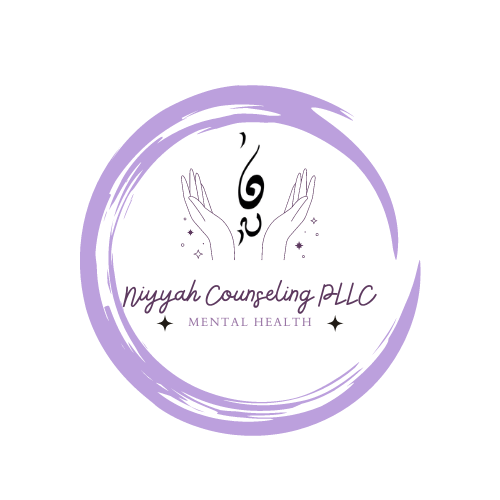Generational Trauma: Finding the Strength to Heal After a Traumatic Event
Generational Trauma: Finding the Strength to Heal After a Traumatic Event
Trauma has a profound impact on individuals, but its effects often ripple beyond the immediate experience. For many, the wounds of a traumatic event can be passed down through families, creating cycles of pain and struggle that persist for generations. This phenomenon, known as generational trauma, highlights how unaddressed trauma from one generation can influence the mental, emotional, and even physical well-being of the next.
Breaking free from generational trauma is not easy, but healing is possible. It begins with awareness, continues with intentional effort, and thrives through a commitment to self-compassion and growth.
What Is Generational Trauma?
Generational trauma, sometimes called intergenerational or transgenerational trauma, occurs when the effects of trauma experienced by one generation are transferred to subsequent generations. This can happen in families where past events—such as abuse, war, systemic racism, or other significant hardships—leave emotional scars that shape parenting styles, relationships, and family dynamics.
For example, a parent who has experienced unprocessed trauma may struggle with emotional regulation, leading to behaviors that affect their children’s sense of safety or self-worth. These children may, in turn, carry forward patterns of anxiety, fear, or unhealthy coping mechanisms.
Recognizing the Signs of Generational Trauma
Generational trauma doesn’t always look like overt dysfunction. It often manifests subtly, making it harder to identify. Common signs include:
Repeating Patterns
Family members may find themselves stuck in cycles of harmful behaviors, such as addiction, neglect, or emotional avoidance.Unspoken Rules and Expectations
Families affected by trauma may enforce rigid or unspoken rules about how emotions are expressed. For example, children may learn that vulnerability is unsafe or that certain topics are “off-limits.”Chronic Stress and Anxiety
Individuals may experience heightened stress responses or a persistent sense of fear, even when there’s no immediate threat.Difficulties in Relationships
Generational trauma can lead to attachment issues, trust problems, or difficulty establishing healthy boundaries.Physical Symptoms
Trauma doesn’t just live in the mind; it can also affect the body. Generational trauma has been linked to increased risks of chronic illnesses, such as heart disease or autoimmune disorders.
Finding the Strength to Heal
Healing from generational trauma requires courage and commitment, but it is achievable. Here are steps to begin the process:
1. Acknowledge the Pain
Healing starts with recognition. Understand and accept that generational trauma may be present in your family. This acknowledgment isn’t about blaming previous generations—it’s about breaking the cycle.
Ask yourself:
What patterns or struggles seem to repeat in my family?
How has my family’s past shaped the way I see myself and the world?
2. Seek Professional Support
A therapist can be a valuable guide in navigating generational trauma. They can help you uncover and understand inherited patterns, process painful emotions, and develop healthier coping strategies.
Trauma-focused therapies, such as Eye Movement Desensitization and Reprocessing (EMDR) or somatic experiencing, can address the physical and emotional effects of trauma stored in the body.
3. Educate Yourself
Learning about generational trauma can provide insight and validation. Books, articles, and workshops about trauma and resilience can empower you to take charge of your healing journey.
4. Set Boundaries
If certain family dynamics perpetuate unhealthy behaviors or emotional harm, setting boundaries can create space for healing. This might mean limiting interactions, redefining relationships, or establishing new rules for communication.
5. Break the Silence
Families affected by generational trauma often avoid discussing past pain. While difficult, having honest conversations can foster understanding and connection. It’s okay to start small, perhaps by sharing your own feelings or asking a trusted family member about their experiences.
6. Practice Self-Care and Resilience-Building
Healing requires energy, so prioritize practices that nourish your body and mind. Consider:
Mindfulness and meditation to help regulate emotions.
Physical activity to release stress and improve mood.
Creative outlets like journaling, art, or music to process emotions.
7. Embrace Generational Strength
While trauma can be passed down, so can resilience. Reflect on the strengths your family has demonstrated in overcoming adversity. Tapping into these positive legacies can fuel your healing journey.
The Power of Healing
Breaking the cycle of generational trauma isn’t just about healing yourself—it’s about creating a better future for the next generation. By addressing the pain of the past, you pave the way for healthier relationships, emotional freedom, and a sense of peace that extends beyond your own life.
Healing doesn’t mean erasing the scars of trauma but learning to carry them with strength and grace. Every step you take—whether seeking therapy, practicing self-compassion, or setting a healthier example for those around you—contributes to breaking the cycle and building a legacy of resilience.
How Niyyah Counseling PLLC Can Help
At Niyyah Counseling PLLC, we understand the profound impact of generational trauma. Our compassionate therapists are here to help you explore your family’s history, process its effects, and build the tools you need for healing and growth.
You don’t have to face generational trauma alone. Together, we can uncover the strength to heal and transform the patterns that no longer serve you.
Contact Niyyah Counseling PLLC
Helping you align your intentions with meaningful action.
